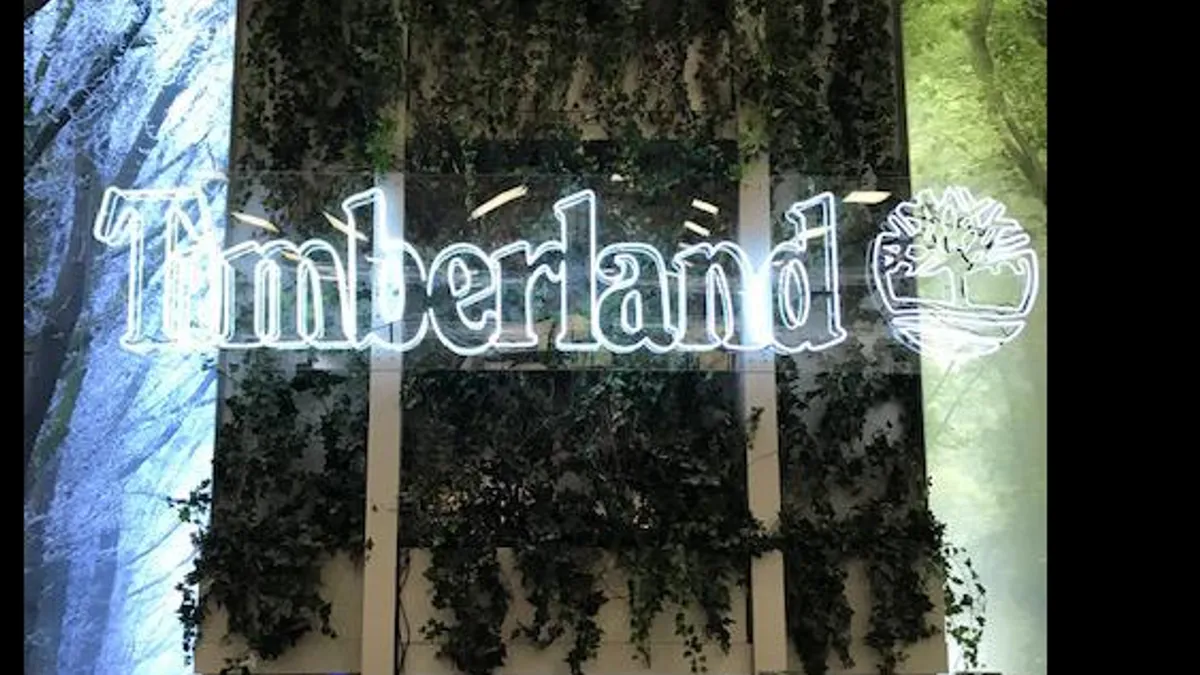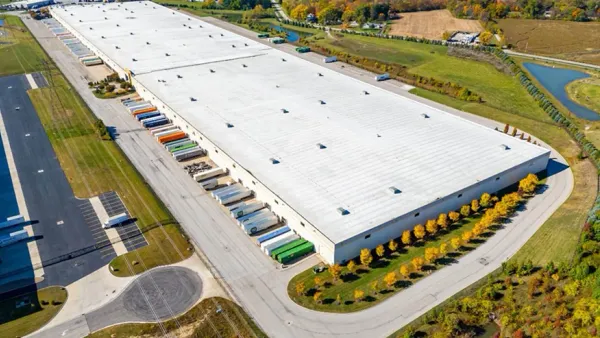Dive Brief:
- Timberland will source 100% of its natural materials, including leather, rubber, cotton, wool and sugarcane derivatives, from regenerative agriculture by 2030, the company announced Tuesday in a press release.
- The apparel and footwear maker has also committed to achieving "circularity" with its end products by 2030, which means all products could be taken apart and the components reused or recycled.
- Timberland is owned by VF Corporation, which set a science-based target in December to reduce the group's emissions from owned operations and purchased energy (scopes 1 and 2) by 55% by 2030, from a 2017 baseline, and to reduce supply chain emissions (scope 3) by 30% by 2030, compared to 2017.
Dive Insight:
Timberland has couched its sourcing and life-cycle analysis work under an umbrella of striving for a net-positive impact on the environment by 2030. In the supply chain, that means intentionally designing products, sourcing materials and choosing manufacturing partners that can meet that standard.
Suppliers and materials have been at the center of Timberland's sustainability efforts for more than a decade. The company has released a full list of factories it contracts with quarterly since 2018 and reported on the sustainability of its raw materials quarterly since 2015. The company, though, has been tracking many of its materials-based goals since 2008.
With that many years of work behind it, some of the goals within Timberland's 100% regenerative sourcing pledge are farther along than others, and the shifting numbers demonstrate how the challenge of sustainable sourcing changes year to year. For example, a greater share of Timberland's total leather came from Leather Working Group gold or silver certified tanneries in 2016 (93.4%) than 2017 (93.1%). In 2019, the company recorded 96.7% of leather coming from such tanneries.
The same is true for cotton. In 2017, 81% of the cotton Timberland sourced was organic either of U.S. origin or certified by the Better Cotton Initiative. In 2019, that number was 77.5%.
Though they fluctuate, Timberland's sustainable sourcing numbers are still high, but that doesn't mean reaching 100% will be easy. In 2019, 68% of all Timberland footwear contained at least one component made with 10% renewed, organic or recycled material, which was lower than the figures recorded for 2018 and a far cry from 100% renewable sourcing for all naturally derived components. Product design will help bridge the gap, according to the company.
"We have developed design policies that require [renewed, organic or recycled] content in all new product development, and we are revisiting carry-over styles to engineer in [renewed, organic or recycled] where applicable," reads the company's fourth quarter 2019 report.
Raw materials production is the largest contributor to fashion industry emissions, according to McKinsey. VF began rolling out an environmental audit covering energy use and greenhouse gas emissions, water use, wastewater, waste management, and chemical use and management for "strategic suppliers" (representing 80% of production) in 2015. It reached 100% completion by tier 1 and 2 suppliers in 2019. The average score was 51 out of 100.
The next step is for VF staff to verify those scores and, according to McKinsey, improving those scores will be paramount in the effort to stem global temperature rise.
Clarification: This story's headline was updated to clarify Timberland's goals.















